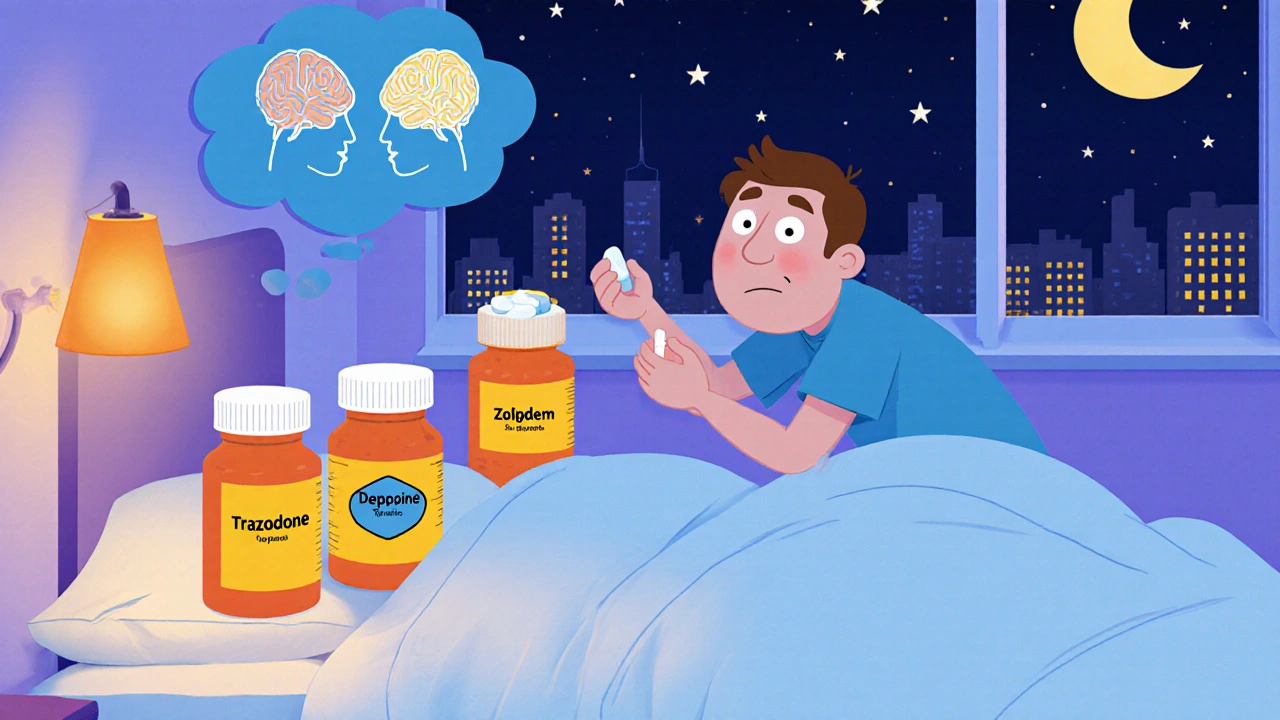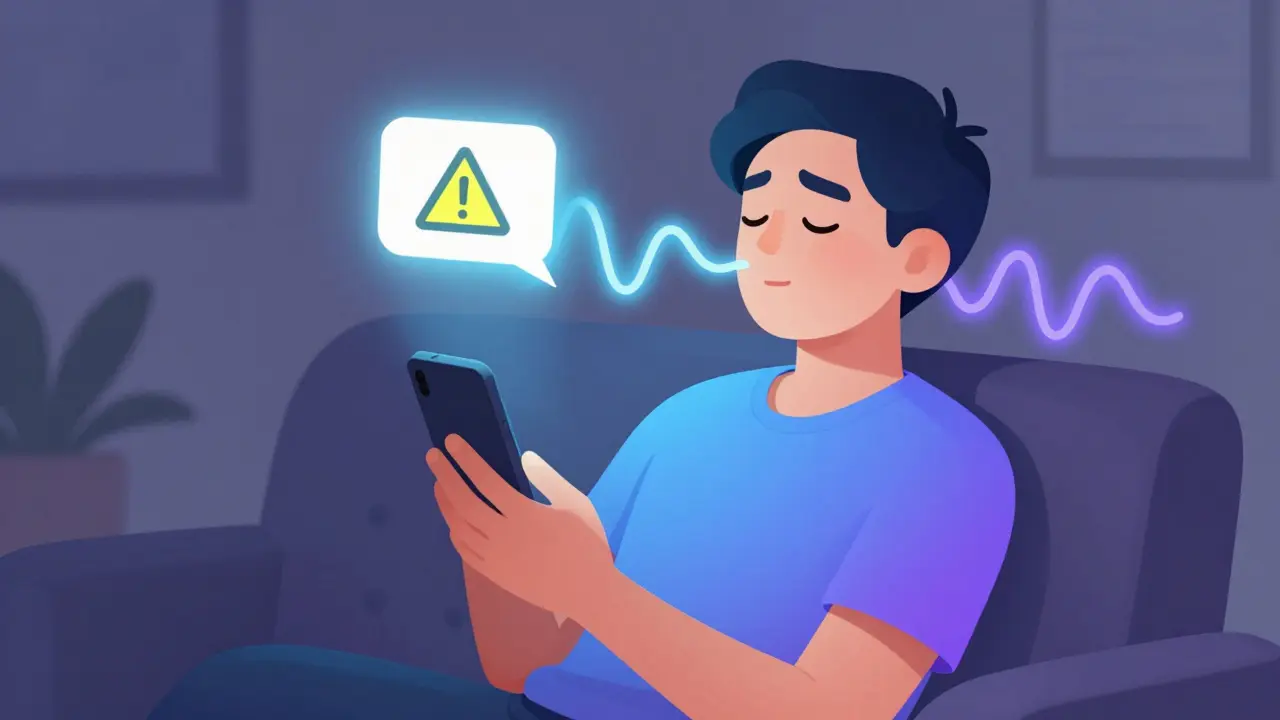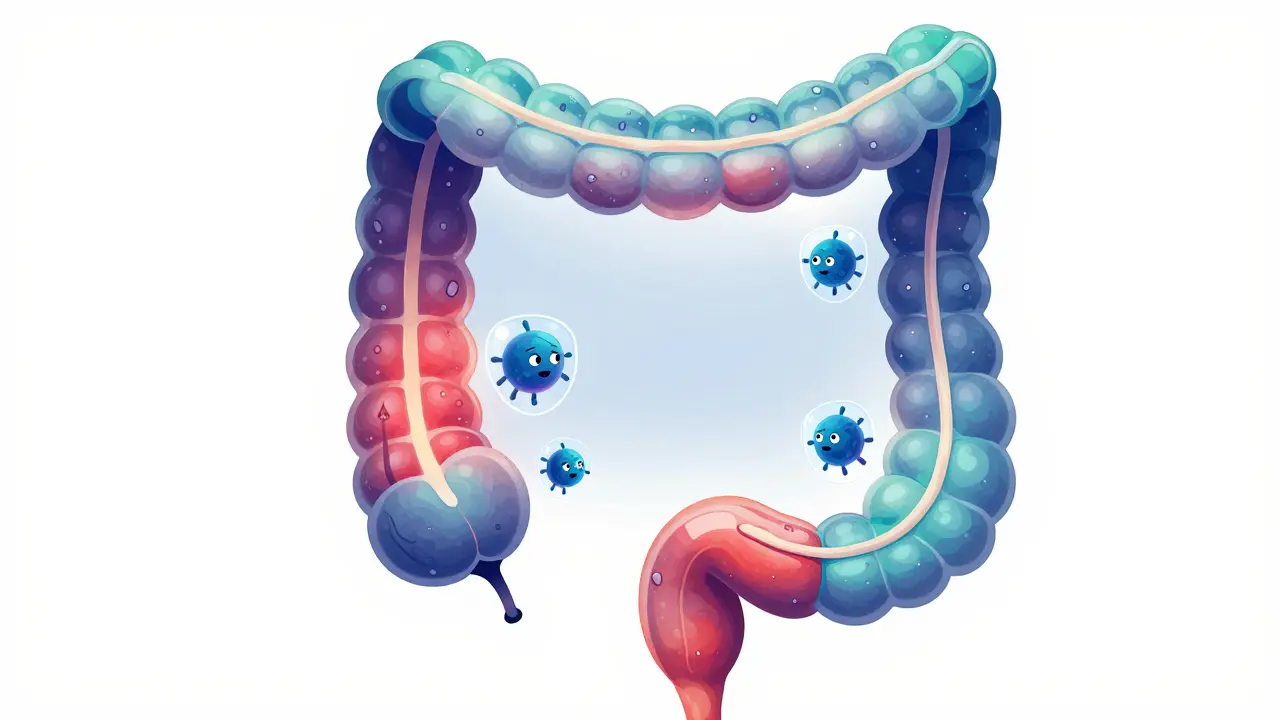Ever been handed a script for Endep and stopped short, wondering exactly what’s in the bottle? This little pill, known to the world as amitriptyline, has been quietly prescribed for decades—not just for depression, but for things like nerve pain, migraines, even as a sleep fix. Sounds like a miracle worker, right? But, Endep isn’t as straightforward as it seems. Doctors sometimes reach for it when nothing else has worked, and if you’re here, chances are you want more than the tired textbook answer. Let’s get into the real nuts and bolts of Endep—why doctors write so many scripts for it, the hidden stuff nobody usually explains, and what life actually feels like on this old-school med.
What Is Endep and Why Is It Still Prescribed?
Ask around, and you’ll find Endep (or amitriptyline) usually isn’t the first antidepressant on anyone’s wish list these days. It landed on the scene way back in the 1960s, which makes it a bit of a dinosaur compared to the newer meds out there. But here’s the thing: just because it’s older doesn’t mean it’s obsolete. Endep is what’s called a tricyclic antidepressant, which means it messes with certain brain chemicals—mainly serotonin and norepinephrine. This boost can help people who are dealing with major bouts of depression, especially if newer antidepressants haven’t quite hit the mark.
But Endep’s real claim to fame? Its surprising range of uses way outside of depression. Neurologists prescribe it all the time for chronic nerve pain, like what you see in fibromyalgia or after a shingles outbreak (postherpetic neuralgia). Chronic tension headaches, irritable bowel syndrome, insomnia that laughs in the face of regular sleep meds—Endep pops up on these scripts, too. Its sedating qualities make it a double-edged sword: helpful for sleep, but also a reason some people can’t handle it. This versatility is why, even in 2025, doctors keep coming back to Endep.
Here’s a wild fact: in Australia and the UK, amitriptyline is one of the top prescribed drugs for nerve pain, even more so than some newer options. It’s not just about tradition; it actually works for many people where fancy new meds fall flat. But don’t expect instant relief. For depression, it can take weeks to notice a difference. For pain or sleep, sometimes it kicks in faster—even at much lower doses than you’d use for mood disorders. We’re talking doses as small as 10mg a night for pain, compared to up to 150mg or more for depression.
Doctors keep prescribing Endep because of this weird mix of history, versatility, and cost. Generic amitriptyline is dirt cheap. Insurance companies love it for that alone. And although it has lots of side effects, most people don’t get the scary ones if they start low and go slow. Ever wondered why some folks on Endep swear by it and others can’t get off fast enough? Half of this is about matching the right dose and reason—most people do better at the tiny doses for sleep or pain than the high ones for depression. So if you’re reading this and thinking the dose sounds low, that’s probably on purpose.
How Endep Works in the Body (and What That Means Day to Day)
You pop an Endep before bed and drift off—sounds dreamy, right? The real story’s a little more complicated. Amitriptyline works by blocking the reuptake of serotonin and norepinephrine. Basically, it helps these mood-boosting and pain-regulating chemicals stick around in the brain. The tricyclic part? It refers to its chemical structure, but think of it more like three big rings joined together. This shape makes it bind to all sorts of receptors, some of which have nothing to do with mood. That’s partly why it’s so notorious for side effects like dry mouth, grogginess, and even weight gain. In med school, they call this profile ‘dirty’—it hits a lot of spots, on purpose or not.
For most, the bedtime dose is a must. Take it in the morning and you’re likely to feel slowed and spaced out all day. Nighttime dosing is the workaround. After about half an hour to a few hours, it starts to kick in, making you sleepy. That’s awesome if sleep is your enemy, but beware—if you need to get up for any reason in the night, you’ll probably feel like you’re walking through molasses. This effect fades some after a few weeks, or if your body gets used to it, but not always. Even the next morning, some people feel (“Endep hangover”)—that fuzzy, heavy, slow feeling that sticks around until coffee (or a shower, or both) brings you back to life.
On the plus side, Endep doesn’t start working for depression or pain in minutes, like a painkiller or a sleeping pill. For depression, it can take up to 3–4 weeks to kick in for most people, though some feel different after a week. For nerve pain, relief often starts within a week or two. In sleep issues, even low doses can make a big difference fast, but too high and you might sleep too deeply—and wake up groggy hours after the alarm. This is why docs almost always start at the lowest possible dose and increase it slowly. For pain or sleep, most people never go above 25–50mg a night. The heavy 100mg+ doses are pretty much only used for tough mood problems, and they’re rarely a first choice anymore.
Have trouble with side effects? You’re not alone. Common stuff is dry mouth (like you just ate a handful of cotton balls), weight gain, constipation, blurred vision, and feeling tired. When you first start or when increasing dose, you might also notice low blood pressure when you stand up, or even feeling dizzy. Rare people get real trouble: fast heart rate, trouble peeing, or mood swings. If you ever get chest pain, mess with your heart, or super confused, you need a doctor fast. The upside is, by starting low and easing the dose up, a lot of people find that most of these settle in a week or two.
This all sounds like a lot to take on, but it’s worth remembering why Endep’s still in play: no other antidepressant or pain med has quite the same profile, and if you’re someone it works for, it can be a real life changer. Nobody likes the sound of ‘dirty’ drugs for side effects, but when the goal is to stop pain or finally sleep again, sometimes the messy ones do the trick better than the neat-and-tidy new drugs. That’s why even neurologists and pain docs—folks who see lots of fancy options—still write loads of Endep scripts every week.

Tips for Using Endep Safely and Making It Work for You
If you’re about to start Endep, or you’re already on it and not loving it, there are a bunch of practical things you can do to tip the odds in your favor. First big rule: timing is everything. Take it about an hour or two before bed—even earlier if you know you need more time to wind down. Too late, and you risk a next-morning hangover. Some people swear that taking it with a small snack (think a piece of fruit or a cracker) helps with nausea or stomach upset, though this isn’t strictly required.
Worried about morning grogginess? Make sure you give yourself enough time for a full night’s sleep—Endep works best when you’re not trying to power through on 4–5 hours of rest. Shoot for seven or more hours if you can swing it. If you need to wake up in the middle of the night—parents, this means you—you might want to wait until someone else’s on early-morning duty, at least until your body adjusts. That first week can hit hard, so let your schedule be a little flexible.
Hydration is key. This med dries out your mouth, which isn’t just uncomfortable but also bad news for your teeth. Either sip water during the day, or keep a bottle by your bed for dry-mouth emergencies. Sugar-free gum or lozenges can help, too. If constipation hits, more fluid, fiber, and gentle movement matter more than ever—and yes, prune juice really does work.
If you’re taking Endep for chronic pain and don’t see results after a few weeks, talk to your prescriber before tossing the bottle. Sometimes a slight adjustment (even 5–10mg) does the trick. Don’t ever double the dose yourself, and don’t stop cold turkey. Coming off Endep suddenly can mess with your sleep, mood, or trigger weird withdrawal effects like nausea and vivid dreams. Always go slow—your provider can usually cut your dose by 10mg every week or two. Slow is smoother, with fewer surprises.
A heads up for those juggling other meds: Endep can mix badly with a bunch of stuff, especially if you’re on antihistamines, sleeping pills, or anything for your heart. It can also boost the effects of alcohol—sometimes dangerously—so it's smart to skip the nightcap. If you’re planning surgery or dental work, always tell your doctor you’re on Endep, because it interacts with some anesthesia meds. Plus, this drug can skew the results of some urine and blood tests. If anyone asks, just say you’re taking amitriptyline.
Driving or handling heavy machinery? Not the best idea when you first start Endep (unless you’re keen on a comedy of errors). Wait until you see how you feel on your usual dose before getting behind the wheel. And if you’re thinking about baby plans, Endep isn’t completely off-limits in pregnancy, but there are risks—so always check in first.
Probably the oddest tip: if you wear contact lenses, you might notice your eyes feel dry or vision goes blurry. Blame Endep’s anticholinergic effects. Eye drops, or switching to glasses while your dose stabilizes, can help. Small annoyances, but knowing ahead of time is half the battle.
Myths, Real-World Stories, and the Future of Endep
The legend of Endep is full of half-truths and urban myths. Some people worry it’s habit-forming, but it’s not addictive in the way opioids or benzos are. However, you can get physically used to it, which is why quitting needs a slow, steady approach. Some folks believe it’ll ‘turn off’ their emotions, but for most, it’s more like dialing down the volume on pain or sadness—making stuff manageable, not making you a robot. Still, you’ll hear wild stories, from people who lost tons of weight on Endep (rare, since most gain), to nightmares that could fuel a Netflix horror flick. Turns out, vivid dreams are a real side effect—and one of the weirder perks for creative types.
Ask around in online forums, and you’ll see a split crowd: some people love Endep for giving them a real chance at sleep and pain relief, others hate how foggy and slow it makes them feel. One Australian patient described finally sleeping for the first time in years after starting just 10mg, while another from Ireland swore the cottonmouth and munchies forced a switch to something else. Doctors and nurses mostly agree: it takes patience, but when Endep works, it really works.
There’s plenty of research still happening, even in 2025, to find out the best ways to use amitriptyline and minimize the annoying stuff. Microdosing (using less than 10mg) for pain and sleep has gotten attention, thanks to studies showing you get most of the benefit with fewer side effects at these low levels. The biggest risk remains in overdose—it’s especially dangerous in large amounts, and that’s why doctors are careful about handing out big scripts. Suicidal thoughts—rare but real—should always be talked about openly; Endep is not for those at high risk without close medical supervision.
If you ever want to switch off Endep, or to something newer, talk to your prescriber and go at it slowly. The withdrawal isn’t dangerous for most but can throw people for a loop if done too fast. That famous dry mouth usually fades fast when you stop, but the sleep and mood differences might take a while to work out.
Bottom line? This old-school med isn’t for everyone, but for the folks it suits—and who can handle the side effects—it’s like finally finding something that actually delivers. Just remember: low, slow, and always keep your medical team in the loop. That’s the trick to making Endep as painless as possible. You only get one shot at managing tough pain, gnarly sleep, or deep-seated mood issues. And if it takes an old tricyclic to get there, you might just find it’s the fix that newer drugs never quite managed to deliver.






Dan Burbank
July 18, 2025 AT 03:45Ah, Endep, or amitriptyline for the uninitiated, this old relic of antidepressants still clings stubbornly to clinical practice despite its notoriety. Let me tell you, while some hail it as a miracle, its side effects list reads like a horror novel that’s way too long. Dry mouth, drowsiness, weight gain—not to mention those potentially dangerous cardiac complications. It’s baffling how many patients get prescribed this without a clear understanding of these risks.
Frankly, I find it baffling that contemporary medicine still sings the praises of this tricyclic antidepressant when newer, safer options exist. The thing about Endep is it doesn’t just act on serotonin; it messes with a plethora of neurotransmitters, leading to a ton of unwanted effects. So if you’re diving into this, be prepared for a rollercoaster ride, and make sure the doctor monitoring your case isn’t just blindly following old protocols.
Anyone else here noticed how despite its old-school status, it remains widely in use? I suspect cost and accessibility play a big part.
Anna Marie
July 18, 2025 AT 05:51Thanks for bringing attention to Endep and its uses. It’s so important to have open, clear discussions about medications like this because many people start them without being fully informed. Amitriptyline can indeed be life-changing for some, but it’s not without its challenges.
I appreciate the mention of side effects and risks, as these often go unaddressed in casual conversations. Patients should be closely monitored and encouraged to communicate any unwanted symptoms early. The advice on safer use was especially helpful—having practical tips can make a huge difference in adherence and overall wellbeing.
It would be nice to delve more into the psychological support aspects alongside the medication. After all, medicine is just one part of recovery.
Abdulraheem yahya
July 18, 2025 AT 09:51Such an informative post! I think what’s really important about Endep is understanding how it fits into the bigger picture of mental health treatment. It’s not just about popping a pill and feeling better overnight; it’s about recognizing the nuanced ways these drugs interact with our brain chemistry.
Also, many folks discount the energy dips or the groggy feeling that can come from amitriptyline, but acknowledging those allows for better management strategies, like timing doses or adjusting lifestyle. The tips for safer use in this post are key because, honestly, medication without awareness can be more harmful than helpful.
Curious if anyone has experience balancing Endep with other therapies, like mindfulness or counseling, to optimize results?
Preeti Sharma
July 18, 2025 AT 20:25Honestly, I always wonder about these medications from a philosophical standpoint. We chase biochemical corrections but rarely question whether the 'normal' brain state we aim for is even truly achievable or desirable. Endep, like a tool, can be both healer and harm.
Sure, side effects are well documented, but are we sometimes blinded by the notion that medication is the answer? Isn't there a deeper existential layer to these struggles?
Still, for those caught in the throes of depression, the practical benefits can't be ignored. Safety tips here may help prevent suffering, even if they don’t answer the fundamental human questions.
Ted G
July 19, 2025 AT 06:38I'm telling you, pharmaceutical companies aren’t squeaky clean. Endep’s reputation is glossy on the outside, but who’s really digging into the data on long-term effects and off-label uses? This stuff changes your brain, no question—but what about dependency or withdrawal symptoms?
I’m always suspicious when a drug stays popular despite serious side effects being common knowledge. What kind of lobbying keeps these things in circulation? Patients deserve way more transparency about these so-called hidden risks that often turn out to be not so hidden.
Is anyone else wary of the imbalance in information patients receive vs what’s known behind the scenes?
Miriam Bresticker
July 19, 2025 AT 08:51omg i totally appreciate this post!! 😊 i’ve seen so many ppl struggle with antidepressants and the emotional rollercoaster they can put you on. sometimes it feels like the side effects are worse than the symptoms it’s trying to fix!! 😩
also those tips, could def help ppl avoid falling into the traps that many aren’t warned about 😕 like seriously, the importance of good communication with your doc cannot be stressed enough. your health is literally in your hands too!!
anyway, hope more ppl see this and get safer help 💕✨
Claire Willett
July 22, 2025 AT 20:31Nice overview—brief but covers the essentials. Amitriptyline’s pharmacodynamics aren’t simple; anyone prescribing it should understand its anticholinergic profile, risk of orthostasis, and over-sedation. Not to mention its interaction potential.
For someone who requires this medication, slow titration and vigilant follow-up are non-negotiable. Clinical prudence ensures avoiding the guise of a quick fix.
Does anyone have experience managing amitriptyline in elderly patients? The risk-benefit calculus can be quite different in geriatric populations.
olivia guerrero
July 26, 2025 AT 06:51This is SO important!!!!!!! The more awareness, the better!!! >< People gotta know the risks and how to use this med safely. Most docs don't explain this well enough!!!
The tips here are so, so good!!!!! Literally, communication is key. And yes, everyone’s experience varies sooooo much. Some get relief, some get side effects from hell!!!
Keep posts like this coming!!! It really helps people feel less alone and more empowered!!! 💪💖
Dominique Jacobs
July 30, 2025 AT 20:45Look, I’m all for meds when needed, but it has to be part of a bigger plan. Too many people just trust their doctor’s word blindly and end up stuck dealing with side effects they never anticipated. Endep can be a brutal beast if not handled correctly.
Anyone else tired of the trial-and-error approach with antidepressants? It’s so frustrating. But it’s crucial to keep pushing for better communication and not settle for just ‘take this and see what happens.’ Doctors and patients both bear responsibility.
Would love to hear ideas on how to improve this process — maybe more personalized medicine based on genetics? Thoughts?
Claire Kondash
August 5, 2025 AT 21:45The intricate dance between neurochemistry and existential experience makes medications like Endep endlessly fascinating yet problematic. While it stands as a beacon for relief from depressive abyss, one must not overlook the paradox of altering consciousness and identity itself.
It invites us to question: Are we merely medicating symptoms or engaging in active transformation of self? The side effects are symptomatic of deeper dissonances that warrant reflection beyond the biomedical lens.
Moreover, the article's tips for safer use become a form of praxis, a guided way to navigate this complex terrain, albeit impermanent and fraught with uncertainty.
Matt Tait
August 14, 2025 AT 23:31Honestly, some of you are overthinking this to death. Endep is what it is—a medication with pros and cons like everything else in medicine. The paranoia about long-term effects and conspiracies is just that, paranoia. Use common sense, follow your doctor’s advice, and don’t be dramatic.
This post gives a good summary, so instead of endless speculation, let’s be pragmatic. Are you using it? Are you getting better? Side effects manageable? That’s what matters.
Sometimes people just want a quick fix, but meds take time. Be patient and realistic.